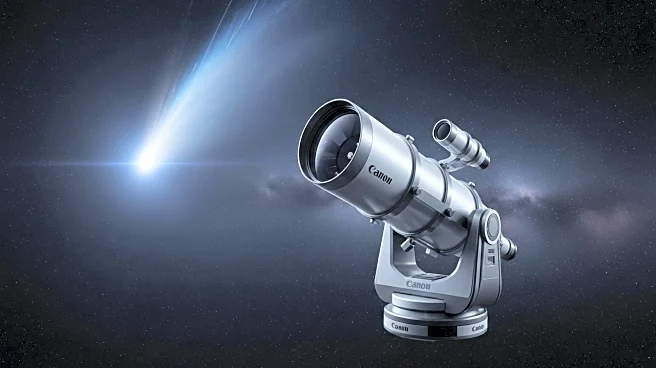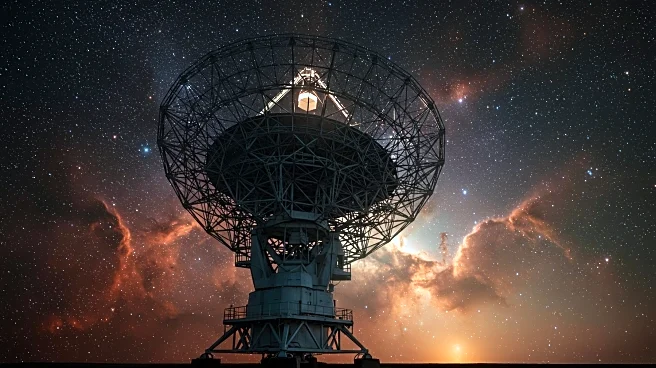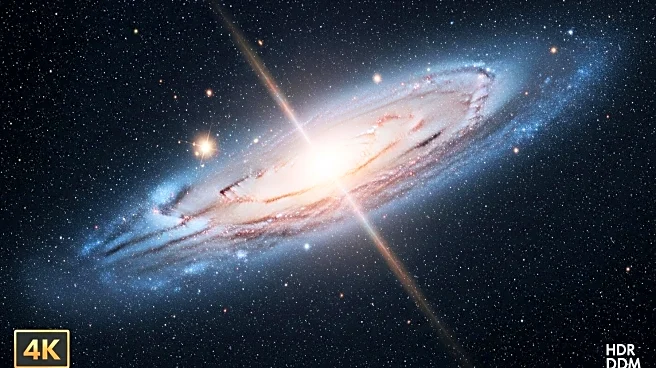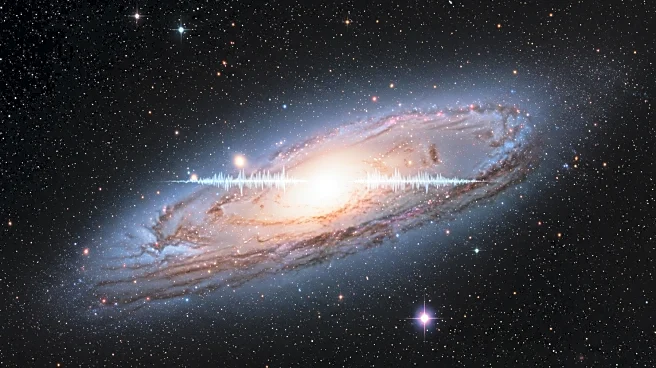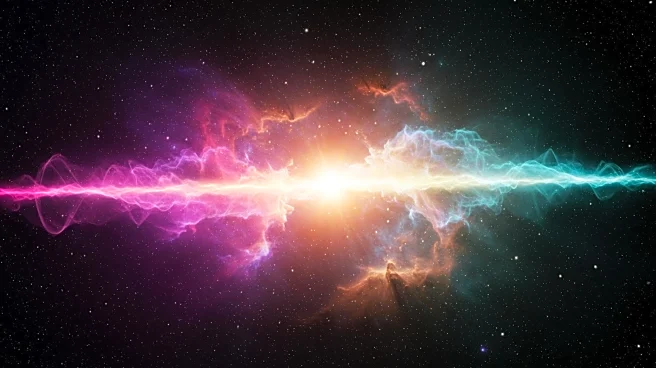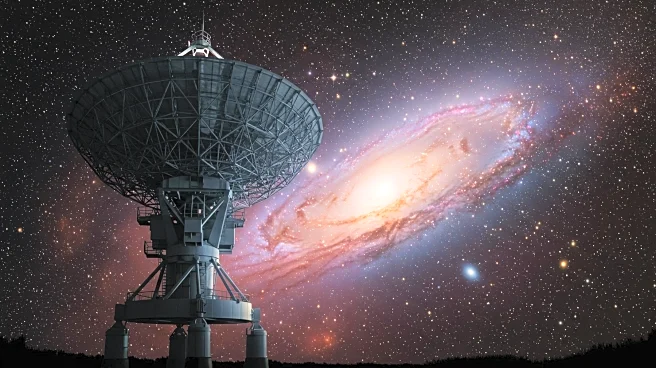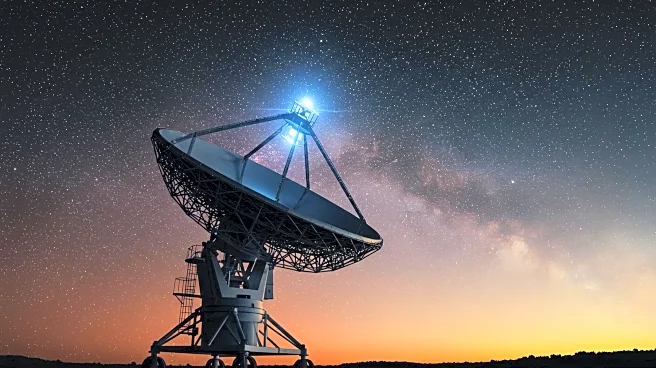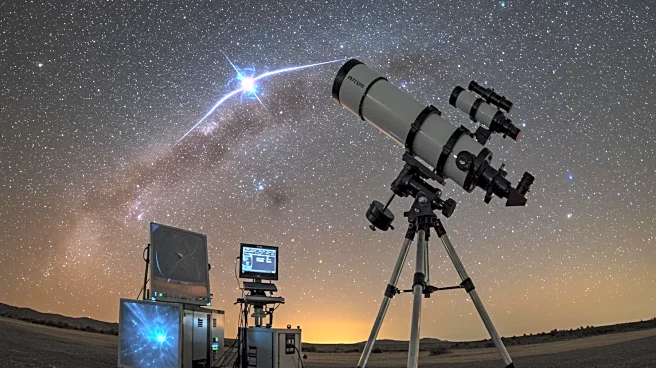What is the story about?
What's Happening?
Astronomers have detected the brightest fast radio burst (FRB) to date, originating from the galaxy NGC 4141, approximately 130 million light-years from Earth. This FRB, named RBFLOAT, was observed on March 16 using the Canadian Hydrogen Intensity Mapping Experiment (CHIME) and its Outriggers. The discovery, published in The Astrophysical Journal Letters, suggests that magnetars, highly magnetized remnants of dead stars, may be responsible for these bursts. The James Webb Space Telescope provided further observations, revealing a faint infrared source near the burst's location, potentially linked to the FRB. This detection could help astronomers understand whether FRBs have repetitive patterns or are singular events.
Why It's Important?
The detection of RBFLOAT provides crucial data that could unravel the mysteries surrounding fast radio bursts, which have puzzled scientists since their discovery in 2007. Understanding the origins and characteristics of FRBs could lead to significant advancements in astrophysics, particularly in the study of magnetars and neutron stars. The ability to pinpoint the location of FRBs with precision allows researchers to explore their environments and potential causes, offering insights into cosmic phenomena and the universe's structure. This research could also enhance the capabilities of telescopes and observational technology, driving further scientific exploration.
What's Next?
The CHIME and Outriggers telescopes will continue monitoring the sky to detect more FRBs, aiming to localize hundreds annually. Researchers will keep observing RBFLOAT for potential repeat signals, which could provide further understanding of FRB behavior. The ongoing study of FRBs may reveal whether they are all repeaters or if some are sporadic, leading to new theories about their origins. The findings could also influence future astronomical research and technology development, enhancing our understanding of the universe.
Beyond the Headlines
The study of FRBs touches on broader questions about the universe's structure and the life cycle of stars. The potential link between FRBs and magnetars could offer insights into stellar evolution and the processes that occur in distant galaxies. This research also highlights the importance of international collaboration in astronomy, as multiple institutions and technologies are involved in these discoveries. The advancements in observational technology, such as the James Webb Space Telescope, demonstrate the growing capabilities of scientists to explore and understand cosmic phenomena.
AI Generated Content
Do you find this article useful?



